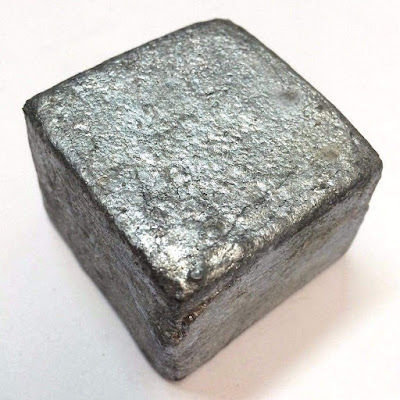In the field of materials science, some elements often remain in the shadows, overshadowed by their more spectacular counterparts. Tellurium, a metalloid element with atomic number 52, is one such element. Despite its relatively low profile, tellurium plays an important role in a variety of industries due to its unique properties and applications. Let us embark on a journey to highlight the diverse uses and importance of tellurium in modern society.
Understanding Tellurium:
Tellurium, named after the Latin word "tellus" meaning earth, is a rare metalloid found in the Earth's crust. It was discovered in the late 18th century, but its applications have only been fully realized in recent decades. Often found in association with gold, silver, and other metals, tellurium is obtained primarily as a byproduct of copper and lead refining processes.
Applications in Electronics:
The most prominent application of tellurium is in the field of electronics. Cadmium telluride (CdTe) is an important component in the production of photovoltaic solar panels. CdTe panels are highly efficient at converting sunlight into electricity, providing a cost-effective alternative to traditional silicon-based solar cells. Tellurium's unique semiconductor properties make it ideal for this purpose, facilitating the absorption of solar energy and converting it into useful electrical energy.
Furthermore, tellurium finds its way into the manufacturing of phase-change memory devices. These memory devices use the reversible phase transition of some materials, including tellurium, between amorphous and crystalline states to store binary data. With its ability to rapidly switch between these states, tellurium enables the development of high-speed, non-volatile memory solutions, which is critical for a variety of computing applications.
Alloying agent:
The addition of tellurium to various alloys imparts desirable properties that make them suitable for specific industrial applications. For example, it is used in the production of steel and copper alloys, increasing their machinability and corrosion resistance. In lead-based alloys, tellurium improves the metal's ability to be formed into complex shapes, making it invaluable in the manufacture of cables, bearings, and other complex components.
Thermoelectric Applications:
Another interesting aspect of tellurium is its thermoelectric properties. When combined with other elements, tellurium-based compounds exhibit the thermoelectric effect, in which a temperature gradient in the material generates an electrical voltage. This phenomenon is exploited in thermoelectric generators, where waste heat from industrial processes or automotive exhaust is converted into electrical energy. Tellurium-based thermoelectric materials hold promise for harnessing otherwise wasted energy, contributing to energy efficiency and sustainability efforts.
Medical and Research Applications:
Tellurium compounds have attracted interest in the medical and research fields for their potential therapeutic properties. Some tellurium-containing compounds exhibit antimicrobial properties, making them candidates for developing new antibiotics to combat resistant bacteria. Additionally, tellurium isotopes are used in nuclear medicine for imaging and diagnostic purposes, contributing to advances in medical imaging technology.
Challenges and future outlook:
Despite its diverse applications, tellurium's scarcity remains a challenge to its widespread adoption. As demand for tellurium-containing technologies increases, efforts to explore alternative sources and recycling methods become imperative. Furthermore, research on more efficient and sustainable synthesis routes for tellurium-based materials is important to reduce environmental impacts and ensure long-term availability.
Tellurium's versatile properties and applications underline its importance in a variety of industries ranging from electronics to healthcare. As technology advances, tellurium's role is poised to step forward, fueling innovation and shaping the future of materials science and engineering. Efforts to address challenges related to supply and sustainability will be critical in harnessing the full potential of this remarkable element.

Comments
Post a Comment